EHR Implementation Costs: What You Need to Know

Electronic health record systems (EHR) have become an essential component of modern healthcare, streamlining patient data management, enhancing workflows, and improving patient care. While their benefits are undeniable, the implementation of these systems comes with significant financial considerations. Understanding the costs associated with EHR implementation is important for healthcare providers to budget effectively and maximize their return on investment. From initial setup expenses to long-term maintenance, every stage of the process requires careful planning. In this blog delves into the critical cost factors involved in adopting an EHR system and how organizations can strategically manage these expenditures. Key Cost Factors Considering EHR Implementation Initial Investment Costs Implementing an electronic health record system requires a substantial initial investment. Healthcare facilities must purchase the EHR software, hardware components such as servers or cloud-based solutions, and other necessary infrastructure. Additionally, integration with existing healthcare systems can increase upfront expenses. Customization is another cost factor, as many organizations require tailored solutions to meet their operational needs. Data migration from legacy systems to the new platform is often complex and time-consuming, necessitating technical expertise and adding to implementation costs. Healthcare providers must allocate adequate funds for these initial expenses to ensure a smooth transition. Training and Staff Onboarding Training is a crucial aspect of EHR adoption. Without adequate training, healthcare professionals and administrative staff may struggle to utilize the system efficiently, leading to operational disruptions. Training programs often include workshops, online courses, and hands-on practice sessions to familiarize users with the software. Costs may also arise from hiring external trainers or developing in-house training modules. Well-structured training ensures that employees can navigate the new patient management software effectively, minimizing errors and enhancing productivity. Investing in training not only improves system adoption but also optimizes workflow efficiency within the organization. Ongoing Maintenance and Support Beyond the initial investment, organizations must budget for ongoing maintenance and technical support. Regular software updates, security patches, and troubleshooting services are necessary to keep the EHR system functional and secure. Subscription fees for cloud-based EHR solutions and costs associated with a dedicated IT support team contribute to long-term expenses. Effective health information management requires continuous system optimization, ensuring smooth operations and data integrity. Without proper maintenance, healthcare facilities may experience system failures, security vulnerabilities, and reduced operational efficiency, making proactive management essential. Data Security and Compliance Costs Ensuring compliance with healthcare regulations is a fundamental aspect of EHR implementation. Protecting patient data is critical, requiring robust cybersecurity measures such as encryption, multi-factor authentication, and intrusion detection systems. Compliance with HIPAA and other data protection laws necessitates regular audits, legal consultations, and investments in security infrastructure. Healthcare providers must allocate funds for cybersecurity training to educate staff on best practices for data protection. A failure to meet regulatory standards can result in significant legal penalties and reputational damage, making security investments a non-negotiable expense. Customization and Integration Expenses Many healthcare facilities require customized EHR solutions tailored to their specific workflows. Customization may involve developing specialty-specific templates, modifying system functionalities, and integrating third-party applications such as laboratory management or billing software. Seamless interoperability within the healthcare system is crucial for enhancing efficiency and patient care coordination. However, the more customization a facility requires, the higher the associated costs. Balancing customization within budget constraints is essential to achieving an optimal solution that meets operational needs without excessive spending. Downtime and Productivity Loss Transitioning to an EHR system often results in temporary disruptions to daily operations. Staff members need time to adapt to the new system, which can lead to slower patient processing and potential revenue loss. To minimize productivity loss, healthcare facilities can adopt phased implementation strategies, allowing different departments to transition at different times. Running parallel operations with legacy systems can also ease the shift, ensuring that critical processes continue without major disruptions. Planning for downtime costs and developing strategies to mitigate workflow interruptions are essential to maintaining service quality during implementation. Return on Investment (ROI) Considerations Despite the high upfront costs, electronic health record systems offer significant long-term financial and operational benefits. Improved efficiency reduces administrative burdens, while enhanced data accessibility leads to better patient outcomes. Automation of routine tasks, streamlined documentation, and real-time data access contribute to increased productivity. Additionally, healthcare facilities may qualify for government incentives or reimbursements for EHR adoption, further offsetting costs. By carefully assessing potential savings and improvements in service quality, organizations can justify their investment and ensure long-term profitability. Read More: Electronic Health Record Systems (EHR): A Complete Guide Conclusion EHR implementation involves a series of complex financial and operational decisions. From initial investments to ongoing maintenance, security, and productivity considerations, healthcare providers must strategically manage resources to maximize the benefits of their patient management software. While the costs can be significant, the long-term advantages—such as improved health information management, enhanced patient care, and streamlined workflows—make EHR adoption a worthwhile investment. By carefully planning each stage of implementation and prioritizing staff training and security, healthcare organizations can ensure a smooth transition and maximize the value of their EHR systems. Roojh provides the best solutions to help healthcare providers effectively manage EHR implementation costs while optimizing efficiency and compliance.




